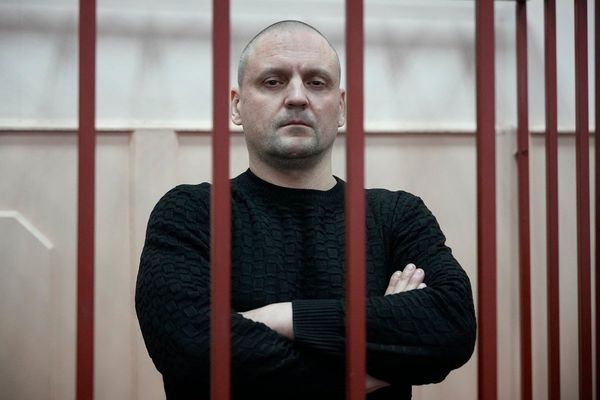
Branded the “minister for kneecaps” during his time as a Labor senator, Graham Richardson was a political powerbroker who exerted substantial influence over the party’s factions, and therefore its leadership.
A master of factional horse-trading, Richardson’s political career was peppered with controversy. Although dogged by various scandals, the gregarious, lunch-loving “Richo” became one of Australia’s most skilful and well-connected political operators.
Richardson, whose death at age 76 after a long period of ill health was announced on Saturday, also left a substantial policy legacy. As social security minister in the early 1990s, with the economy under pressure, he advocated passionately for pensioners at risk of losing their incomes. As environment minister, he ensured the establishment of protections for native forests and was instrumental in achieving world heritage status for Kakadu national park and the Daintree rainforest. He helped build an alliance with the Greens, resulting in an unprecedented fourth term of office for Labor under Bob Hawke. Hawke had been Richardson’s mentor, but the pair fell out after the 1990 election, when Richardson was not given the post he coveted: transport minister. He transferred his allegiance to Paul Keating, who supplanted Hawke as leader the following year.
“When I was minister for the environment, I did things that I think stand the test of time as really good decisions and I’m proud of those,” Richardson said. “They don’t go away. They are a constant reminder you were there.”
A deal-maker and dispenser of favours, Richardson was renowned for his discretion and capacity to inspire wealthy businesspeople to part with their money, often over very long lunches at some of Sydney’s best restaurants. Known to be a charming risk-taker who could be reckless at times, Richardson was linked with various characters who would tarnish his career and reputation.
The journalist Marian Wilkinson wrote in her 1996 book The Fixer: “He was not a politician who believed in the rigid lines of black and white; he operated between those lines. He would say: if it wasn’t going to put him in jail, it wasn’t wrong. It was this attitude, too, that gave Richardson the winning edge. But it also brought his political career to the brink of disaster on more than one occasion.”
The first blot on Richardson’s copybook occurred in mid-1980s, when as state secretary of the NSW Labor party he found himself loosely refereeing factional battles in Sydney’s inner-city branches. Richardson later conceded he had made “a very big mistake” by not acting more emphatically on allegations of branch-stacking and the scuffles at meetings that culminated in the brutal bashing of the future federal MP Peter Baldwin. Known as the Enmore affair, it forever tainted Richardson’s reputation among some colleagues.
Further scandals ensued, although Richardson was never found guilty of any misdemeanour. There were appearances before two royal commissions in the early 1980s related to party donations; allegations by a prostitute in 1985 (later recanted) of sex with Richardson and other politicians on a boat in Sydney Harbour; the 1991 Marshall Islands affair (allegations that he used his position to benefit a friend) that ultimately cost him his career; an alleged link to a prostitution ring in 1994, run by two associates; and a settlement with the Australian Tax Office in 2008 over an undisclosed Swiss bank account.
Graham Frederick Richardson was born on 27 September 1949, the only surviving child of Frederick James Richardson, a postal clerk, and Catherine “Peggy” (nee Graham). He grew up in the Sydney suburbs of Kogarah and Allawah and attended Marist Brothers College. At 16 he nearly died in a car accident, which left him with significant facial scarring and subsequent depression. Richardson began a law degree at the University of Sydney in 1969 but was an indifferent student and dropped out a year later following his mother’s sudden death at 42.
His father’s elevation to state secretary of the Amalgamated Postal Workers’ Union inspired in Richardson a passion for Labor politics. He also began to understand the role of power and loyalty as factional infighting affected his parents. In 1971, he was welcomed into the party’s hard-nosed right faction and entrusted with reviving NSW state branches.
By 1981, Richardson had his sights on a position on the Labor NSW Senate ticket for the 1983 federal election. He set about getting rid of the poorly polling leader Bill Hayden in favour of Bob Hawke. In what proved to be his enduring talent, Richardson found the numbers to get Hawke elected.
“[I] felt a real charge, a surge of adrenaline; this was better than sex and almost as exciting as a good feed,” Richardson said of his new role.
With Victoria’s Robert Ray, he began shoring up the parliamentary right and dividing the federal caucus into cross-state factions.
In 1986, the Greens leader, Bob Brown, showed Richardson a patch of Tasmanian wilderness. The encounter had a marked impact on him and he made it his priority to embrace green politics, understanding it would help Labor win the support of minor parties and independents then holding the balance of power. Following the 1987 election Hawke made Richardson environment minister, and six months later he was elevated to cabinet.
His primary environmental goal was to protect forests, but he also pushed through a revised scheme that would drastically reduce the Coronation Hill mining project in Kakadu national park. In the lead-up to the 1990 election, Richardson had convinced the cabinet to adopt the Toronto position on global emissions and he campaigned strongly for primary and preference votes. It worked, Labor won a fourth term and Richardson prepared to be rewarded with the transport and communications portfolio he hankered after.
But Hawke, no longer as reliant on his “fixer”, instead offered Richardson either the social security portfolio or a position as high commissioner in London. He accepted the minister’s job but the seed of dissent was sown and he began plotting against Hawke, promoting treasurer Paul Keating for the top job. A first leadership spill in May 1991 failed, but by December Hawke was out, Keating was in, and Richardson had his coveted portfolio.
But within months he was brought undone by a telephone call he made to the president of the Marshall Islands on behalf of a friend in jail there. That, alongside elements of his friendship with the stockbroker Rene Rivkin, led to Richardson resigning from the ministry in May 1992. He briefly went to the backbench before securing the health portfolio, even as his own health declined, and in March 1994 he left politics. In 2016 he underwent an 18-hour surgery for chondrosarcoma, a disease he had been living with since 1999.
In 2020, Richardson was made an officer of the Order of Australia. In his post-politics life, he became a lobbyist, radio talkback host, writer and political commentator with Sky News.
He was married twice, first to Cheryl Gardner, with whom he had two children. He is survived by his second wife, Amanda, and their son.







